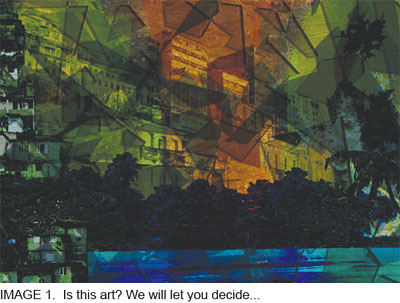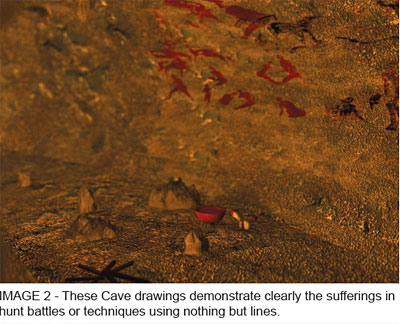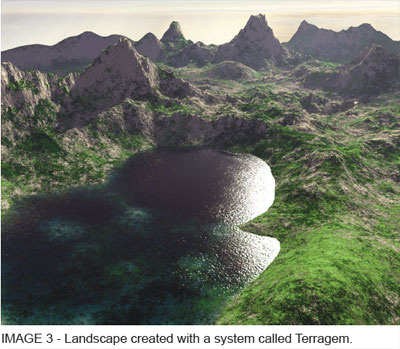Digital Art? What Is & Isn’t Art In The World Of 3D
What is and isn’t art in the world of 3D. A perspective from Eduardo Azevedo.
As 3-dimensional craftsmen, we are often asked about the artistic qualities of what we produce. Although artists can consider this subject controversial, teachers and researchers also, the truth is that the entire issue itself is being approached in the wrong way. The first line of my book reads: “The first mathematical experiment was artistic: the music”. Pythagoras discovered musical notes many years before Christ. Later, I ask: “are computer graphics only an artist’s tool, or are they responsible for the work itself?” For some, this question seems to have no answer. Consulting the dictionary, we can see that there are several meanings of the word ‘art’: “original word of Latin, which means: to know, ability.
Capacities of man to put into practice an idea by dominating a material. Creator capacity of expressing or to transmit sensations or feeling.” The word, ‘create’ means: “give existence, give origin, form, produce, invent, imagine”. So, we need to have both an idea and a material domain to produce something that expresses or transmits emotions or feelings.
 However, if for you, Image 1 does not seem be art, you could also be right – what is art for you may not be for another. If it does not stir any emotion in you then, for you, it is not art. That doesn’t mean, however, that it lacks significance for others. For those, Image 1 is art.
However, if for you, Image 1 does not seem be art, you could also be right – what is art for you may not be for another. If it does not stir any emotion in you then, for you, it is not art. That doesn’t mean, however, that it lacks significance for others. For those, Image 1 is art.
It seems clear that, for an image to be considered art, we need to take into account several different concepts. We will need to look at aspects of history, styles, and changes in art, and even a return to the student’s chair. The study of artistic concepts will be useful not only in generating the best images, but also in understanding what the authors of such images are trying to express. In this case, even things that do not seem to be artistic can still be considered art.

Even before the invention of modern machines, the argument of what is or is not art began many years before Christ, where sculptors in Egypt were angry about pieces that were produced by moulding. The artistic controversy of images generated by computer, however, can be traced back to the Industrial Revolution, when old artisans struggled to create new designs within the boundaries established by the new machines, often placing limitations on their work. The freedom to create without restriction is in fact an artist’s great collaborator, but that does not mean that an artist must limit the expression of an idea or feeling when using technology. Human beings, after all, can also express themselves with just a few resources – the first drawings found in caves (Image 2) demonstrate clearly the sufferings in hunt battles or techniques using nothing but lines.
 There can also be confusion regarding the authorship of digital images. When we use a system as such as Terragem (Image 3), or any other for that matter (Photoshop, Max, etc), it follows that the authorship of this image should be shared somehow. We have to consider that the images generated by those systems establish an inter-connection between anonymous participants, and that they can be anywhere. Failing to recognize this would be as erroneous as a race-car driver who takes all the credit for his victory, while his building and maintenance teams are ignored.
There can also be confusion regarding the authorship of digital images. When we use a system as such as Terragem (Image 3), or any other for that matter (Photoshop, Max, etc), it follows that the authorship of this image should be shared somehow. We have to consider that the images generated by those systems establish an inter-connection between anonymous participants, and that they can be anywhere. Failing to recognize this would be as erroneous as a race-car driver who takes all the credit for his victory, while his building and maintenance teams are ignored.
Our last consideration in this topic has to do with the automatic image generation systems that we use to produce the procedurals textures, known most as noise or fractals. Those algorithms, based on mathematical equations, generate not only very similar images of natural elements (plants, rocks, water, clouds, etc) but also characters’ behaviours. In this case, we have to know that even the images generated by equations can be considered art, because programmers or scientists created those equations and algorithms.
Moving the mouse, that’s my artist’s gesture. I do not cut the stone; I do not dirty my hands with mud, neither my clothes with ink. I do not search for colours; everything is here, in the folds and bars of my systems. With this machine, I make intuitive choices, and gestures without apparent physical effort. While I rest my muscles, I awaken my mind to new dreams that open new dimensions, and transform my gesture into art.
Have your say…

